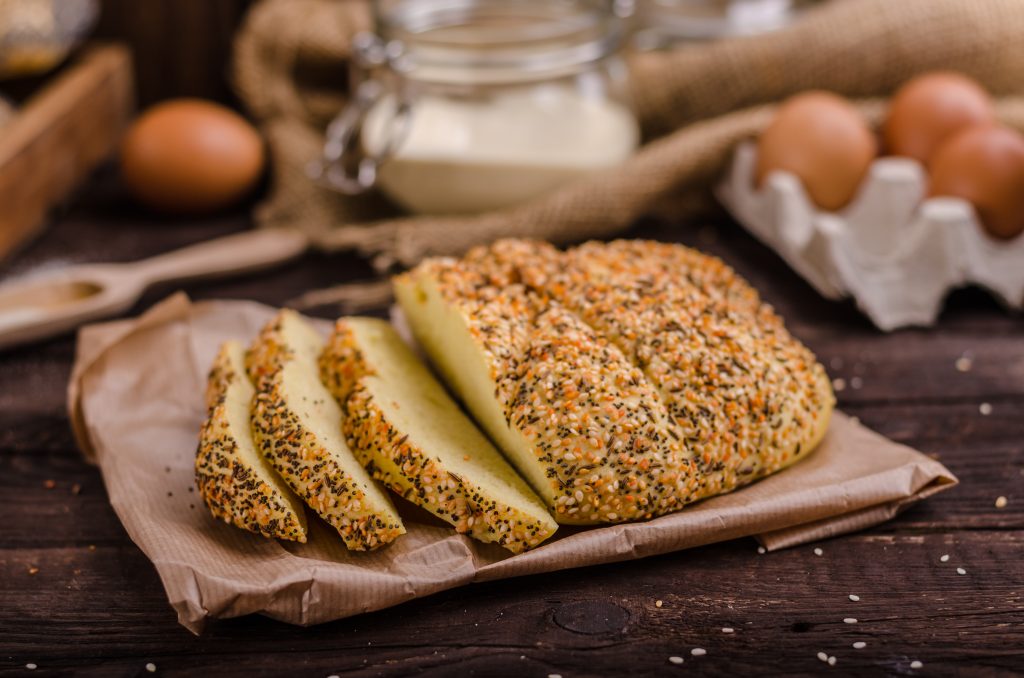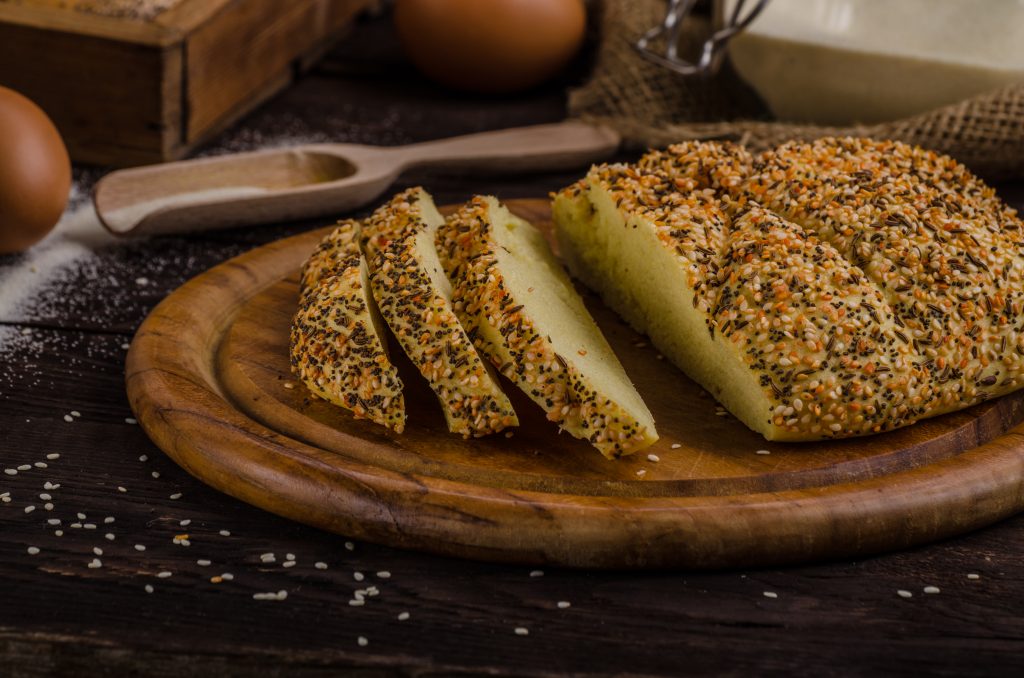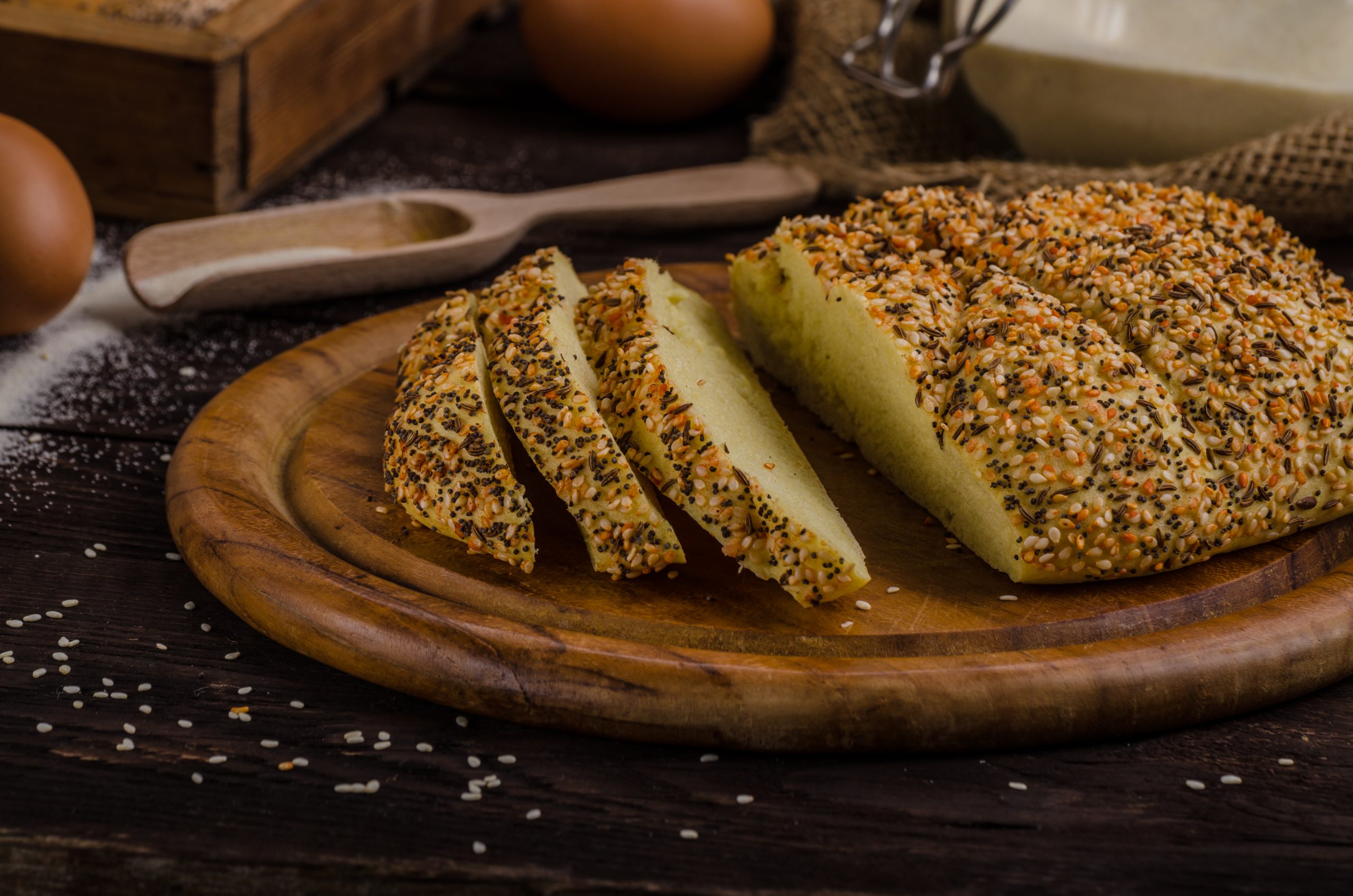Introduction
The cottage cheese bread recipe is rapidly becoming a favorite among health-conscious bakers and food enthusiasts alike. This cottage cheese bread recipe creates a bread made with high-protein cottage cheese, offering a nutritious, versatile, and delicious addition to your culinary repertoire. Whether you’re looking to add more protein to your diet or simply explore new baking adventures, this cottage cheese bread recipe is worth a try.
Cottage cheese bread is not just another high-protein bread; it’s a nutritious, versatile, and delicious addition to your culinary repertoire.
Why This Cottage Cheese Bread Recipe is a Must-Try
Cottage cheese has long been recognized for its health benefits, making this cottage cheese bread recipe an excellent choice. When you use cottage cheese in bread, it adds a moist, tender texture and a slight tangy flavor that enhances the overall taste. The cottage cheese bread recipe offers a low-fat, high-protein, and calcium-rich alternative to traditional breads.
- Health Benefits: Cottage cheese is known for its high protein content, making it an excellent choice for those looking to increase their protein intake. This particularly benefits muscle building, weight management, and overall wellness.
- Trendiness: With the growing trend of high-protein, low-carb diets, as more people search for healthy bread alternatives, cottage cheese bread has become a popular choice, and recipes like cottage cheese bread are gaining popularity. Fitness enthusiasts and dietitians are praising its balance of nutrients, making it a staple in many health-conscious kitchens.
In fact, the incorporation of cottage cheese in various baking recipes is not a new concept. For centuries, dairy products have been used to enrich baked goods, providing moisture, flavor, and a boost in nutritional value. Cottage cheese, with its unique texture and mild flavor, lends itself particularly well to bread recipes. Not only does it enhance the bread’s softness, but it also adds a slight tang that pairs beautifully with both sweet and savory ingredients.
For more ideas on how to incorporate cottage cheese into your diet, explore these delicious and healthy cottage cheese recipes on Nelda Recipes.
The Nutritional Power of Cottage Cheese
Cottage cheese is a powerhouse of nutrition. It’s an excellent source of high-quality protein, which is essential for muscle repair and growth. This makes it particularly valuable for those who lead active lifestyles or are trying to build muscle mass. Additionally, cottage cheese is rich in essential vitamins and minerals such as calcium, which is crucial for maintaining healthy bones and teeth, and B vitamins, which play a role in energy production.
Moreover, cottage cheese is low in fat and calories, making it a great choice for those looking to manage their weight. Unlike some other dairy products, cottage cheese is less likely to contribute to weight gain as it provides a high level of satiety due to its protein content. This means that you can enjoy it in your meals without worrying about excessive calorie intake.
Basic Ingredients for Cottage Cheese Bread Recipe
Before diving into this cottage cheese bread recipe, it’s essential to gather all the necessary ingredients. This cottage cheese bread recipe calls for ingredients like cottage cheese, flour, eggs, baking powder, and a pinch of salt, all of which combine to create a delicious loaf.
- Cottage Cheese: The star of the recipe. Opt for full-fat or low-fat based on your dietary preference.
- Flour: All-purpose flour works well, but you can substitute it with whole wheat or gluten-free flour.
- Eggs: These act as a binding agent and help to create a fluffy texture.
- Baking Powder: This ensures your bread rises nicely and has a light, airy structure.
- Salt: A pinch of salt enhances the overall flavor of the bread.
- Optional Add-ins: Herbs, spices, or even grated cheese can be added for extra flavor.
Ingredient Substitutions and Alternatives
One of the great things about making cottage cheese bread is its flexibility. Depending on your dietary needs or personal preferences, you can easily swap out ingredients.
- Flour Substitutes: If you’re gluten-sensitive, you can use gluten-free flour blends that are available in most grocery stores. Whole wheat flour can be used for a denser, more nutrient-packed bread. Almond flour is another option that adds a slightly nutty flavor while keeping the bread gluten-free.
- Dairy-Free Alternatives: For those who are lactose intolerant or following a vegan diet, you can substitute the cottage cheese with a dairy-free alternative such as almond ricotta or tofu blended with a bit of lemon juice to mimic the tanginess of cottage cheese.
- Egg Replacements: If you’re avoiding eggs, try using flaxseed meal or chia seeds mixed with water as a binding agent. Each tablespoon of flaxseed meal or chia seeds mixed with three tablespoons of water can replace one egg.

Step-by-Step Guide to Making Cottage Cheese Bread Recipe
In this section, you’ll follow a detailed step-by-step guide to bring your cottage cheese bread recipe to life. From preparation and mixing the dough to baking and serving, this guide ensures your cottage cheese bread recipe turns out perfectly every time.
1. Preparation
Begin by preheating your oven to 350°F (175°C). Grease a loaf pan with butter or oil, or line it with parchment paper to prevent sticking.
2. Mixing the Dough
Combine the cottage cheese and eggs in a large mixing bowl. Mix until smooth. Whisk together the flour, baking powder, and salt in a separate bowl. Gradually add the dry ingredients to the wet mixture, stirring continuously until a thick dough forms. If you add herbs or spices, now is the time to fold them.
3. Baking Instructions
Transfer the dough to the prepared loaf pan, spreading it evenly. Bake in the oven for 45–55 minutes, or until the top is golden brown and a toothpick inserted into the center comes out clean.
4. Cooling and Serving Suggestions
Allow the bread to cool in the pan for 10 minutes before transferring it to a wire rack to cool completely. Once cooled, slice and serve. Cottage cheese bread is versatile and can be enjoyed independently or with various dishes.
For more recipes highlighting cottage cheese’s versatility, visit Nelda Recipes.
Popular Variations of Cottage Cheese Bread
Cottage cheese bread is incredibly versatile, and with a few tweaks, you can create several variations to suit different tastes and dietary needs:
- Cottage Cheese Flatbread: This version is thinner and can be used as a base for pizzas or as a wrap for sandwiches. It’s also perfect for those who prefer a crispier texture. To make flatbread, simply roll out the dough into a thin sheet before baking.
- 2-Ingredient Cottage Cheese Bread: For a quick and easy option, you can make a simple bread using just cottage cheese and flour. This version is particularly popular among those who are short on time but still want to enjoy homemade bread. The result is a dense, chewy bread that’s perfect for sandwiches or as a side dish.
- Herbed Cottage Cheese Bread: Add fresh herbs like rosemary, thyme, or dill to the dough for a savory twist. You can also sprinkle the top with seeds like sesame or poppy seeds before baking for added texture and flavor.
- Sweet Cottage Cheese Bread: Incorporate a bit of honey or sugar, along with some dried fruits like raisins or cranberries, for a sweet version. This variation pairs wonderfully with a cup of tea or coffee and makes for a delightful breakfast treat.
Nutritional Benefits of Cottage Cheese Bread
Cottage cheese bread is not just delicious; it’s also packed with nutrients.
- Protein: A single slice can offer up to 10 grams of protein, making it an excellent snack for those looking to build muscle or manage weight.
- Low in Calories: Cottage cheese is naturally low in calories, so you can enjoy this bread without worrying about excessive calorie intake.
- Rich in Calcium: This bread is a good source of calcium, supporting bone health.
- B-Vitamins: The eggs and flour in the bread provide essential B-vitamins that help in energy production and maintaining a healthy nervous system.
- In addition to being a nutritional powerhouse, cottage cheese bread is also an excellent option for those on a weight-loss journey. Due to its high protein content and low calorie count, it helps keep you full longer, reducing the need for snacking between meals.

Tips for Perfect Cottage Cheese Bread Every Time
While making cottage cheese bread is straightforward, there are a few tips to ensure you get the best results every time:
- Avoid overmixing: Overmixing the dough can result in dense bread. Mix just until the ingredients are combined.Use fresh ingredients: fresh cottage cheese and baking powder will yield better results. If your baking powder is older than six months, consider replacing it to ensure your bread rises properly.Storing the bread: Store cottage cheese bread in an airtight container at room temperature for up to three days, or refrigerate it for up to a week. For longer storage, slice the bread and freeze it. This way, you can easily grab a slice and toast it whenever you need it.Reheating Tips: For the best taste, reheat slices of cottage cheese bread in a toaster or oven rather than a microwave. This will help maintain the bread’s texture and prevent it from becoming soggy.
Serving Suggestions and Pairings
Cottage cheese bread is incredibly versatile and can be served in many ways:
- On Its Own: Enjoy a slice with a pat of butter or cream cheese.
- With Soups and Salads: Pair it with a hearty soup or a fresh salad for a balanced meal.
- As a Sandwich Base: Use slices of cottage cheese bread to make a protein-packed sandwich.
- With Dips: Serve with hummus, guacamole, or any of your favorite dips.
FAQs: Cottage Cheese Bread
Here are the answers to your questions:
What makes cottage cheese bread different?
Cottage cheese bread is unique because it incorporates cottage cheese directly into the dough, giving the bread a moist, tender texture and a slightly tangy flavor. Unlike traditional bread recipes that rely on just flour, yeast, and water, the addition of cottage cheese introduces a higher protein content and a richer nutritional profile. This bread is often denser and more filling than standard bread, making it a great option for those looking to boost their protein intake.
Does cottage cheese melt when you bake it?
Cottage cheese does not melt in the same way that other cheeses do, such as cheddar or mozzarella. Instead, when baked, the curds in cottage cheese may soften and blend into the surrounding ingredients, but they generally retain their shape. This characteristic makes cottage cheese an excellent ingredient for baking, as it adds moisture and a creamy texture without creating a runny consistency.
Is cottage cheese bread healthy?
Yes, cottage cheese bread is considered healthy, particularly when compared to traditional white or whole wheat bread. The inclusion of cottage cheese boosts the bread’s protein content, making it more filling and nutritious. Additionally, cottage cheese is low in fat and calories, rich in calcium, and provides essential vitamins like B12. This makes cottage cheese bread a great option for those looking to manage their weight, build muscle, or simply enjoy a more balanced diet.
Low calorie bread recipe
Here’s a simple recipe for low-calorie bread that you can easily make at home. This bread is light, airy, and a healthier alternative to traditional bread.
Ingredients:
- 1 cup (120g) whole wheat flour (or a mix of whole wheat and all-purpose flour)
- 1 cup (240ml) warm water (about 110°F/45°C)
- 1 teaspoon active dry yeast
- 1 teaspoon sugar or honey (optional, to help activate the yeast)
- ¼ teaspoon salt
- Cooking spray or a small amount of oil for greasing
Instructions:
- Activate the Yeast:
- In a small bowl, mix the warm water with the sugar or honey (if using) and the yeast. Stir until the yeast dissolves. Let it sit for about 5-10 minutes until it becomes frothy. This step is essential to ensure that the yeast is active.
- Mix the Dough:
- In a large mixing bowl, combine the flour and salt. Make a well in the center and pour in the yeast mixture. Stir until the dough begins to come together. If the dough is too sticky, you can add a little more flour, one tablespoon at a time.
- Knead the Dough:
- Turn the dough out onto a lightly floured surface and knead for about 5-7 minutes until the dough is smooth and elastic. If you have a stand mixer with a dough hook, you can knead the dough on medium speed for about 4-5 minutes.
- First Rise:
- Lightly grease a large bowl with cooking spray or a small amount of oil. Place the dough in the bowl and cover it with a clean towel or plastic wrap. Let it rise in a warm place for about 1 hour or until it has doubled in size.
- Shape the Dough:
- Once the dough has risen, punch it down to release the air. Shape it into a loaf by flattening the dough into a rectangle, then rolling it tightly from one end to the other. Pinch the seams to seal.
- Second Rise:
- Place the shaped dough into a lightly greased loaf pan. Cover it again and let it rise for another 30 minutes or until it has doubled in size.
- Bake the Bread:
- Preheat your oven to 375°F (190°C). Bake the bread for 25-30 minutes or until the top is golden brown and the bread sounds hollow when tapped. If you have a food thermometer, the internal temperature should be around 190°F (88°C).
- Cool the Bread:
- Remove the bread from the oven and let it cool in the pan for about 10 minutes. Then, transfer it to a wire rack to cool completely before slicing.
Notes:
- This bread is low-calorie because it uses minimal ingredients, and whole wheat flour is higher in fiber, which can help you feel full longer.
- You can add seeds like flaxseeds, chia seeds, or sunflower seeds for extra nutrition and texture without adding many calories.
Enjoy your low-calorie bread with your favorite toppings or as part of a healthy sandwich!
Why do you use cottage cheese in baking?
Cottage cheese is used in baking for several reasons:
- Moisture: It adds moisture to baked goods, resulting in a tender, soft texture.
- Protein Boost: Cottage cheese is high in protein, which enhances the nutritional value of the baked item.
- Flavor: It introduces a mild, tangy flavor that complements both sweet and savory dishes.
- Texture: Unlike other cheeses, cottage cheese doesn’t fully melt, which helps maintain the structure of the baked item while still providing creaminess.
- Versatility: It can be used in various recipes, from bread and muffins to casseroles and desserts, making it a versatile ingredient in the kitchen.
What is cottage cheese bread?
Cottage cheese bread is a type of bread made with cottage cheese as a primary ingredient, which gives it a moist texture and a high protein content.
Can I use low-fat cottage cheese?
Yes, low-fat cottage cheese can be used, but it may slightly alter the texture and flavor. Full-fat cottage cheese provides a richer taste.
How do I make the bread less dense?
To avoid dense bread, be careful not to overmix the dough. Additionally, ensure your baking powder is fresh for the best rise.
Can cottage cheese bread be made gluten-free?
Absolutely! You can substitute the all-purpose flour with gluten-free flour. However, you may need to adjust the baking time slightly.
What’s the shelf life of cottage cheese bread?
Cottage cheese bread can last up to three days at room temperature or up to a week in the refrigerator when stored properly.
Conclusion: Why You Should Try This Cottage Cheese Bread Recipe
This cottage cheese bread recipe is a delightful and nutritious alternative to traditional bread. Its high protein content, combined with the creamy, moist texture of cottage cheese, makes this cottage cheese bread recipe a unique and satisfying option for any meal.

